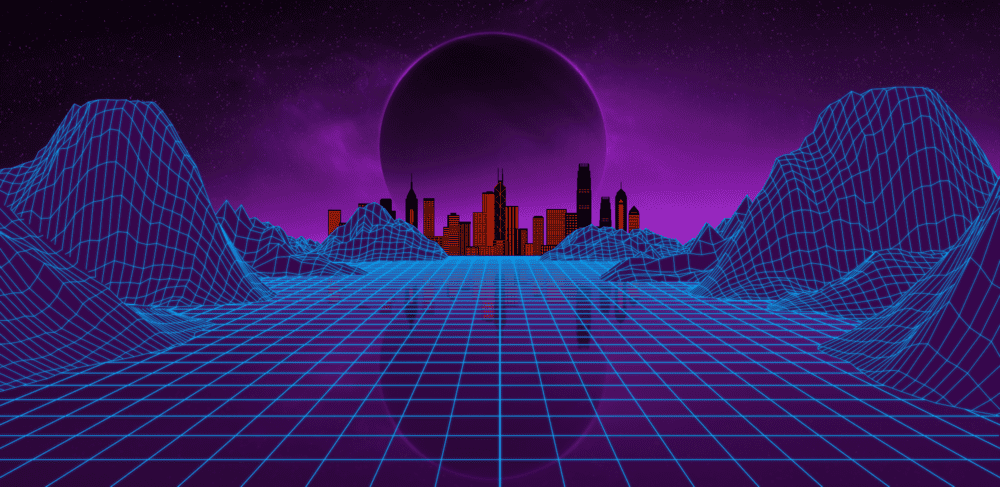The XR Generation
Originally published on the Flipside XR blog.
"The changes are dynamic and take place in real time. The show reconfigures itself dynamically depending upon what happens moment to moment… It’s a smart play."
– Neal Stephenson, The Diamond Age

We started Flipside out of a shared passion for using technology to empower people to be creative and to tell their stories. We love building creation tools, and our mission is to enable a new generation of creativity using VR and AR, or as people have been dubbing the collective Virtual/Augmented/Mixed Reality combo, just XR.
When we started Flipside, we reflected a lot about where we saw these technologies going. We wondered: what will kids growing up in a time when AR headsets are commonplace expect from their apps?
If we can understand this, we can avoid building things that seem novel today but won’t have staying power. We call this target user The XR Generation.
Some key insights emerged from these reflections:
Real-time 3D will succeed 2D content
Just like our kids don't share our passion for the movies and shows we loved growing up, the next generations will prefer content made for their generation.
We're just starting to see the potential of 3D content today, but this content consumption pattern led us to the realization that as display resolutions improve and miniaturization lets hardware reach a consumer-friendly level of style, 3D content will overtake 2D content at some point in the future. At that point, kids will all want to wear XR glasses, because everyone else will be doing it and they won't want to miss out on sharing that experience.
2D content will still be a part of that experience, but it will simply become a virtual flat surface in a larger 3D context. And the reason users will prefer real-time rendering over pre-rendered content like stereoscopic 360 video is because real-time content can be interacted with. A 2D screen or even a 360 video just can't compete on that front. And as interactions become increasingly physical at the same time, the level of engagement will be profoundly different than today's touchscreen world.
Video games are today's 3D content rendered to a 2D screen, and the immersion is lacking. The content never feels like it's part of your world, and you never feel truly transported to another world, because there's a flat piece of glass always in the way. High resolution VR and AR will enable true immersion and physical interaction with the games and entertainment people consume in the future, and today's video games will seem antiquated by comparison, just like our favourite movies growing up seem to kids today.
Social is not a feature, it's basic infrastructure
The XR Generation will expect that they’ll be able to invite their friends to join them in any experience worth their time, and that it will be a rich and expressive shared experience.
Avatars are the tattoos of the future, except ever changing and adapting with you.
Interactivity will be an expectation, too
The video game industry is already bigger than the movie industry, and games like Night in the Woods keep showing us how interactive storytelling can tell deeply personal and human stories while giving the player agency to explore the game's world and go where they choose, and to feel a stronger affinity with the characters they become while playing.
Like Neal Stephenson’s vision of “ractives” in The Diamond Age, we see the line between performer and viewer blurring until they’re almost indistinguishable. Not every piece of content will necessarily be fully interactive, but new forms of interactivity will emerge that haven't even been imagined yet.
VR and AR are inherently creative mediums
Users already expect some degree of agency in their virtual worlds, and they will feel a need to participate in the creation of the impossible things that they are going to experience. Humans are born curious and unafraid to express their creativity, and that creativity is the key to the process of discovery and learning about the world.
When our entertainment blurs the line between real and virtual, it will empower our creativity.
If you can think it, why can't it become virtually real? And with advancements in haptic feedback, it may feel just as good as the real thing, too.
The metaverse is a decoy
The idea of a single metaverse that everyone visits sounds great in sci-fi novels, but doesn't quite add up in practice.
There will be countless virtual worlds, not just one. But we can only interact with so many people at one time, and the intimacy of interaction is what brings it much of its inherent value.
We anticipate that there will be hugely popular metaverse-like apps, but no one app will be able to satisfy everyone's creative and entertainment needs.

Individual games will run outside of that metaverse, even if you launch them from inside of it and end up back there later, like Steam or Oculus Home today. With AR, there won't be a need for a metaverse at all, just for pieces of a metaverse like a unified avatar system.
For these pieces that make up a metaverse, standards will likely emerge just like we've seen on the web: your avatar will go with you from world to world or place to place; there will be an operating system which acts as a way of organizing and launching your XR apps just like we have now, and glues the various standards together to make a whole, but it won't be where users spend most of their time.
Where does all of this lead us?
The key to realizing this long-term vision is to build the features necessary to bridge the gap between what is possible today, and what will become possible as the technology matures. This means providing real value to creators and viewers now, and building the future out in careful steps, which leads us to the following axioms.
Axiom 1: Render in real-time
360 video is going to get much better, but it still has inherent limitations like the viewer being stuck in a fixed point in the scene, and will never be fully interactive in the way a real-time rendered scene can be. Lightfield technology may get us closer to interactivity, but it has its own limitations too and is still years away from hitting the market.
Today's real-time rendering is also limited in its ability to render truly lifelike scenes, but this is improving rapidly and won't be a problem in the future we're talking about. Nothing but real-time rendering can provide users with an immersive as well as interactive experience, allowing them to affect its outcomes.
Interactivity is the superpower of real-time rendering that other formats just can't compete with.
We're focusing on real-time now, because it aligns perfectly with the way we see the XR content of the future being consumed.
Axiom 2: Craft from the user out, not the world in
We are not building the metaverse. We are intentionally building a specific show production and viewing app for actors and viewers, centered on their needs.
This means that actors need to have the tools to help them act, and viewers need to have the tools to engage with the content. It's our job to take care of the rest, which should largely remain unseen to both sides.
Axiom 3: Make content, including live content, fast to produce
Live shows and single-take recordings make production faster today, and allow for real-time engagement.
The easier we can make producing content, the more content can be produced, which provides content creators with a tangible benefit today, and helps us get to a stage where the audience jump inside of, and become part of, the show itself.
Axiom 4: Be social from the start
We started Flipside as a multiplayer experience from day one. This helps us in achieving axiom 3, because multiple users can act together in real-time, without the need to jump between characters over a series of takes.
It also helps us push ourselves when it comes to the expressiveness we want in our avatars. It's one thing to act a part and watch it back, but it's another to see someone in front of you, and assess in real-time whether their expressions are being sufficiently conveyed.
We must breathe life into our avatars by capturing the essence of the person behind it.
Axiom 5: Produce a wide spectrum of content
Since VR and AR are new mediums, we know that the best way to accelerate the pace of discovery is to bring as wide of a variety of content creators into them as possible. Because Flipside is a social show production tool, users can craft simple shareables or more elaborate live and recorded productions like comedies, dramas, and game shows.
Axiom 6: Interact with the audience
An engaged audience comes back.
Our social interactivity framework allows each show to have a game element or custom activity that creates unique levels of engagement on a per-show basis.
While these are simple interactions in the beginning, they will become increasingly varied and rich over time as more creators use Flipside to create new worlds, stories, and experiences. This axiom comes more from live performance and theatre than from television or movies, which we explore in further detail in Les' post Virtual Reality Will Disrupt the Stage.
Axiom 7: Share your learning
From the beginning, we understood the value of onboarding teams and scaling production.
Together, we are building the future of entertainment, and we’ve only just scratched the surface of what’s possible. We envision Flipside as nothing less than the technology that powers interactive entertainment of the future, something that empowers millions of creators to reach billions of viewers, not that those distinctions even make sense to the XR Generation to come.
If you want to join us on this creative journey, make sure to sign up for early access to Flipside.